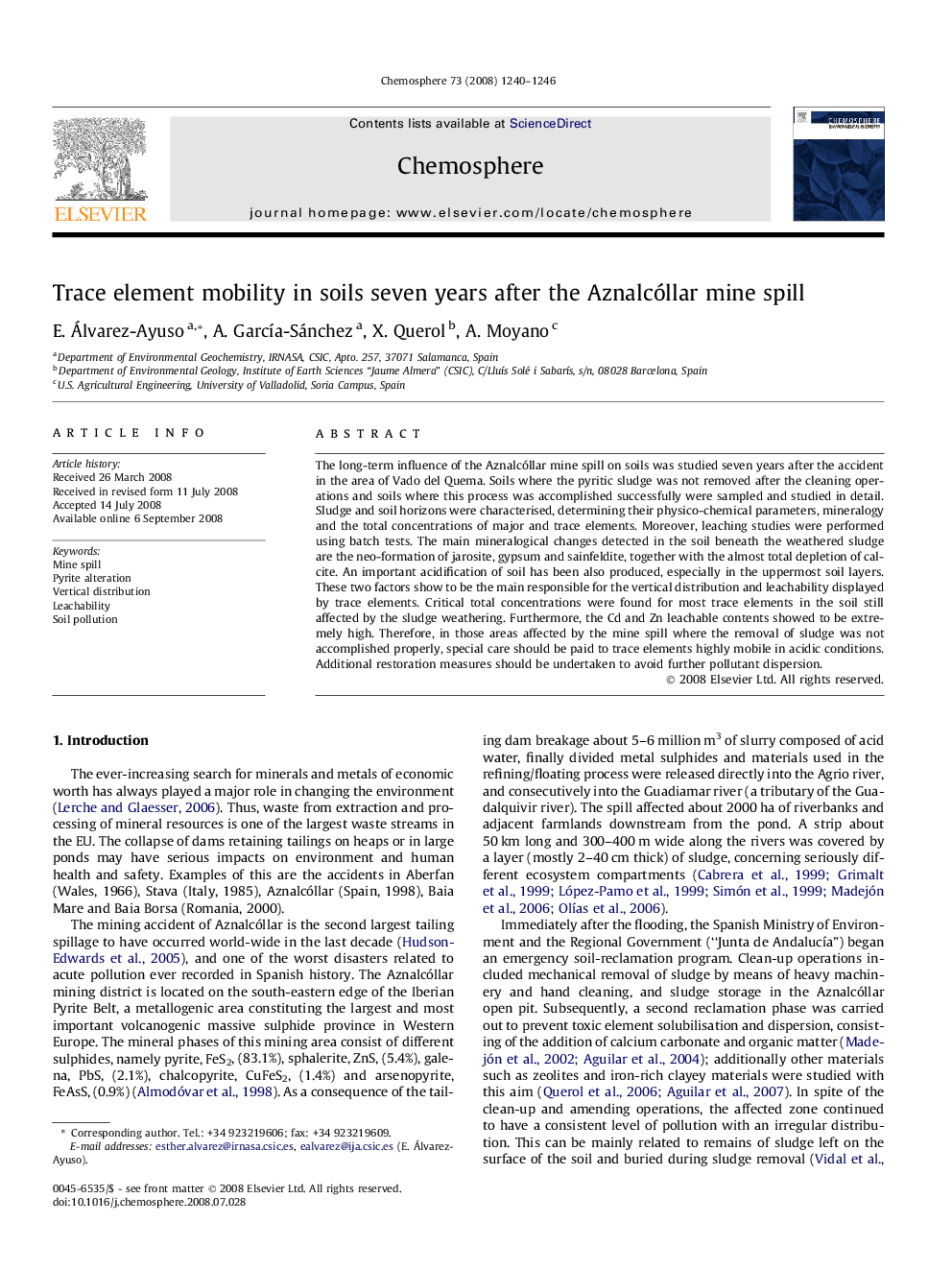| Article ID | Journal | Published Year | Pages | File Type |
|---|---|---|---|---|
| 4413817 | Chemosphere | 2008 | 7 Pages |
The long-term influence of the Aznalcóllar mine spill on soils was studied seven years after the accident in the area of Vado del Quema. Soils where the pyritic sludge was not removed after the cleaning operations and soils where this process was accomplished successfully were sampled and studied in detail. Sludge and soil horizons were characterised, determining their physico-chemical parameters, mineralogy and the total concentrations of major and trace elements. Moreover, leaching studies were performed using batch tests. The main mineralogical changes detected in the soil beneath the weathered sludge are the neo-formation of jarosite, gypsum and sainfeldite, together with the almost total depletion of calcite. An important acidification of soil has been also produced, especially in the uppermost soil layers. These two factors show to be the main responsible for the vertical distribution and leachability displayed by trace elements. Critical total concentrations were found for most trace elements in the soil still affected by the sludge weathering. Furthermore, the Cd and Zn leachable contents showed to be extremely high. Therefore, in those areas affected by the mine spill where the removal of sludge was not accomplished properly, special care should be paid to trace elements highly mobile in acidic conditions. Additional restoration measures should be undertaken to avoid further pollutant dispersion.
